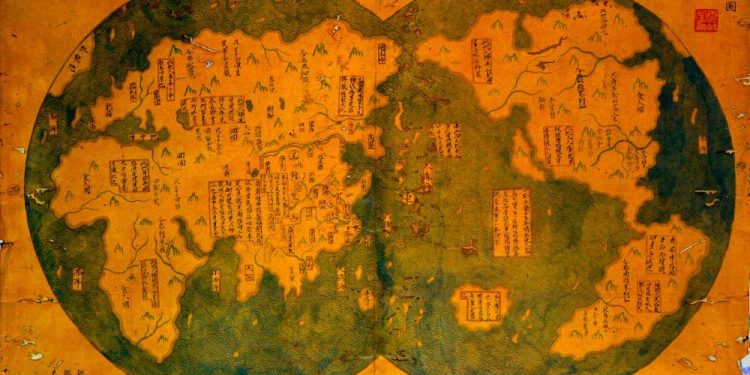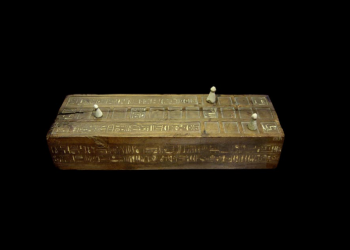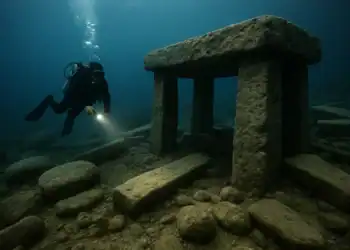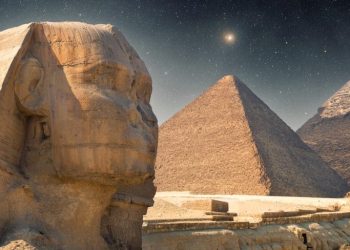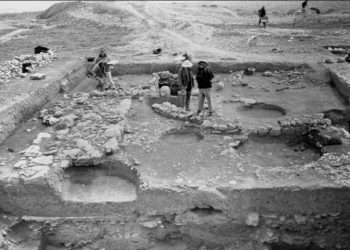What if the ancient Chinese traveled to America before the Spanish? There are many similarities between ancient Mexican cultures and the ancient Chinese. The discovery of America is a historical moment that revolutionized the history of humankind not just because new territory had been found but because two entirely different cultures met. However, it is maintained that Christopher Columbus discovered America—various Caribbean islands and the coast of Central and South America but not North America.
Viking visits to America
Five hundred years before, Leif Eriksson and his Viking sailors set foot in North America and established a settlement there. Saying that America was discovered is a misnomer because there were various cultures when the Spanish and Vikings set foot on the continent. But what if neither the Spanish nor the Vikings were the first to “discover” America? One theory holds that the ancient Chinese landed in America even before the Spanish and the Vikings.
Official history books
Officially, the history books tell us that the Spanish were the first to discover America. However, America was discovered by the Europeans. People have been living on the continent for tens of thousands of years. What are the odds that long before the Spanish, sailors from Asia traveled to “the New World”? One theory proposes that the ancient Chinese may have beaten the Spanish—and the Vikings—to the New World. Although, like many other things in history, which are falsely claimed and still held as an academic fact, history was written, only to be rewritten.
Suspicious similarities
Discoveries help reveal details of the past, and some scholars argue there are incredible, somewhat suspicious similarities between ancient cultures in America and the ancient Chinese civilization. What if, in the distant past and before the Spanish set for on the American continent, ancient Chinese explorers came in contact with Mesoamerican civilizations, resulting in cultural, social, and economic exchange?
Is Fusang America?
While researching a possible connection between ancient American cultures and ancient Chinese, Hu Chundong, a professor at Beijing University, found at least 22 highly similar words in both languages. Further evidence proposed by Chundong is the similarity between Mayan art found in Campeche, Mexico and that of the Tang Dynasty. This same theory holds that a group of Tang Dynasty scholars wrote about sailors who traveled to a distant country called Fusang. The Buddhist monk Hui Shen first described Fusang in 499 AD. According to his description, the place was 20,000 li from China, around 8,316 kilometers. Fusang was a land rich in “edible oval fruits, red and similar to pears. It had a wealth of gold and silver.
A highly suspicious description
According to Joseph de Guignes, Fusang corresponds to the American coast, not Japan or Afghanistan, as others maintain. Hui Shen reported that Fusang was a place with many edible oval fruits, red and resembling pears. It had a wealth of gold and silver. Their society was organized, and they wrote on papers made with vegetable bark. They wore loincloths and hunted deer. This description is highly suspicious of America.
But if ancient Chinese sailors did travel to America, where did they land? Some experts speculate that they may have reached the coast between Mexico and Guatemala. Curiously, ancient Mexican cultures and the ancient Chinese favored the use of jade, to which they attributed healing powers and implemented its use in funeral rites.
Similar artifacts?
Take, for example, the artifacts that were unearthed not long ago at Teotihuacan, where, among other things, archaeologists discovered a green ritualistic mask, among other jade artifacts. Regarding religious belief, both cultures deified feathered serpents; the ancient Maya worshipped, the Aztecs worshiped Quetzalcoatl, and the Chinese worshipped a dragon called Loong. The ancient Chinese and the Maya are known for considering the world in divine dualities.
While the above description of Fusang sounds very familiar to a possible description of America, there is a discrepancy in the theory; Fusang converted to Buddhism according to Hui Shen, in addition to practicing cremation and owning animals such as horses, which did not arrive in America until after the conquest. The latter reinforces the idea that Fusang was in Afghanistan.
When did the Chinese get there?
However, some scholars maintain that there were at least two times during the history of ancient Mexico when the Chinese may have come into contact with the Maya: during the Shang dynasty, around 1500 BC. And more recently, during the Ming dynasty in the early 1400s. Possible visits from the Shang dynasty strangely coincide with the rise of the Olmec civilization from the coast of the Gulf of Mexico, which is on the east side of Mexico, not on the Pacific side.
Ancient Chinese and Olmec contact?
How the Chinese may have reached the Olmec area is uncertain, but researchers have compared Olmec art, ritual practices, and social structure to the ancient Chinese. The use of jade, for example, which had not been used before in Mexico, started at this time. The same happened with writing and a structured royalty. Art has similarities with statues of men with pointed beards and Asian-looking clothing.
The Cleft-headed god?
The ancient Chinese and the Olmecs worshiped a cleft-headed god. But is there any conclusive evidence other than ancient writings? Scientists have found evidence of Asian DNA throughout Mexico, especially on the Atlantic and Pacific coasts. Chinese DNA has been found in the Yucatan Maya, considered by some as the heirs of the Olmec culture. Chinese DNA has also been found in indigenous people from the Pacific coastal state of Nayarit.
Join the discussion and participate in awesome giveaways in our mobile Telegram group. Join Curiosmos on Telegram Today. t.me/Curiosmos



